Last updated October 2023 | Words and photos by Vietnam Coracle | 12 comments

Tom Divers is the founder and creator of Vietnam Coracle. He’s lived, travelled and worked in Vietnam since 2005. Born in London, he travelled from an early age, visiting over 40 countries (he first visited Vietnam in 1999). Now, whenever he has the opportunity to make a trip, he rarely looks beyond Vietnam’s borders and his trusty motorbike, Stavros. Read more about Tom on the About Page, Vietnam Times and ASE Podcast.
One of the many little joys of daily life in Vietnam, trà đá (iced tea) is a feature of almost every dining and social occasion across much of the nation: from roadside snacks to banquets, from trendy cafes to local beer joints. A simple glass of iced tea (often provided for free) can put a smile on your face on a rainy monsoon afternoon, cool your body’s core temperature in the heat of the dry season, awaken your senses with its floral scent and mellow flavour, invigorate your mind and stimulate conversation with its (surprisingly high) caffeine content, and release a surge of oxytocin, making you feel good about the world and grateful to be in Vietnam. Vietnamese iced tea is common yet special, practical yet pleasurable, exotic yet mundane, simple yet sophisticated. Trà đá is so much a feature of daily life – particularly with regards to eating, drinking and socializing – that its importance (and pleasure) is often overlooked.

[Back Top]
AN ODE TO ICED TEA
One of the Little Joys of Daily Life in Vietnam
Iced tea is so ubiquitous that it’s one of the first aspects of daily life that visitors to Vietnam notice. It’s also one of the first words that new arrivals to the country learn: trà=tea, đá=ice. In some parts of tropical Vietnam, where average annual temperatures hover around 30°C, with humidity an oppressive 80%-90%, iced tea is essentially treated like water. When I play tennis in the heat of the day with Vietnamese friends, for example, there’s not a water bottle in sight: rather, there’s a huge bucket of iced tea for the group to refresh themselves and hydrate.
Support My Website
Please make a donation or become a patron if you enjoy my work. Vietnam Coracle is totally free & independent. I never receive payment for anything I write.
Thank you, Tom

Although iced tea is served throughout Vietnam, it’s more commonly found in lowland, southern and central regions, where the weather is generally hot and humid year-round. In the Central Highlands and northern provinces, where temperatures fluctuate depending on the season and altitude, hot tea (trà nóng) is often preferred over iced tea (trà đá), especially during the colder months from November to February. It’s for this reason that I most associate iced tea with the sun-baked, rain-soaked plains of the Mekong Delta (Miền Tây: the ‘West Country’), the teeming streets of Saigon (Ho Chi Minh City) – the nation’s largest metropolis – and the sun-streaked, salty-aired southern and central coast.


In general, iced tea is served in a glass, not a mug, and not in dainty little cups. Unlike hot tea, there isn’t much ceremony or ritual surrounding iced tea. While the former is sometimes shrouded in etiquette and tradition, trà đá is more down-to-earth, practical and necessary. Iced tea serves a basic function: to kept you cool, refreshed and hydrated in hot, humid conditions. And it does its job very well. However, that’s not to say there’s no romance, beauty or subtly to Vietnamese iced tea. In fact, there are many different varieties of iced tea that you’ll encounter when travelling through Vietnam, all of which have distinctive flavours, enticing aromas, and wonderfully exotic ingredients. But you wouldn’t necessarily know it, because no one seems to attach much significance to trà đá. For many people, it seems, iced tea is a purely functional, utilitarian component of dining and socializing in Vietnam: there’s always a glass of trà đá on the table, so what’s the big deal? This attitude is reflected in the dialogue that often proceeds when I ask the question:
“This iced tea is delicious. What kind of tea is it?”
“It’s just trà đá”, comes the reply.
“Yes, but what variety of tea is it?” I press.
“I don’t know….green tea”, comes the response.
“Yes,” I continue, “but is it jasmine, lotus, pandan leaf, lemongrass and ginger, artichoke, fresh-leaf green tea: what kind is it?”
“Just tea”, comes the response.
But it never is “just tea”. It’s usually one of the varieties mentioned above, all of which have very different scents and flavours, and will often depend on which part of the country you’re in.
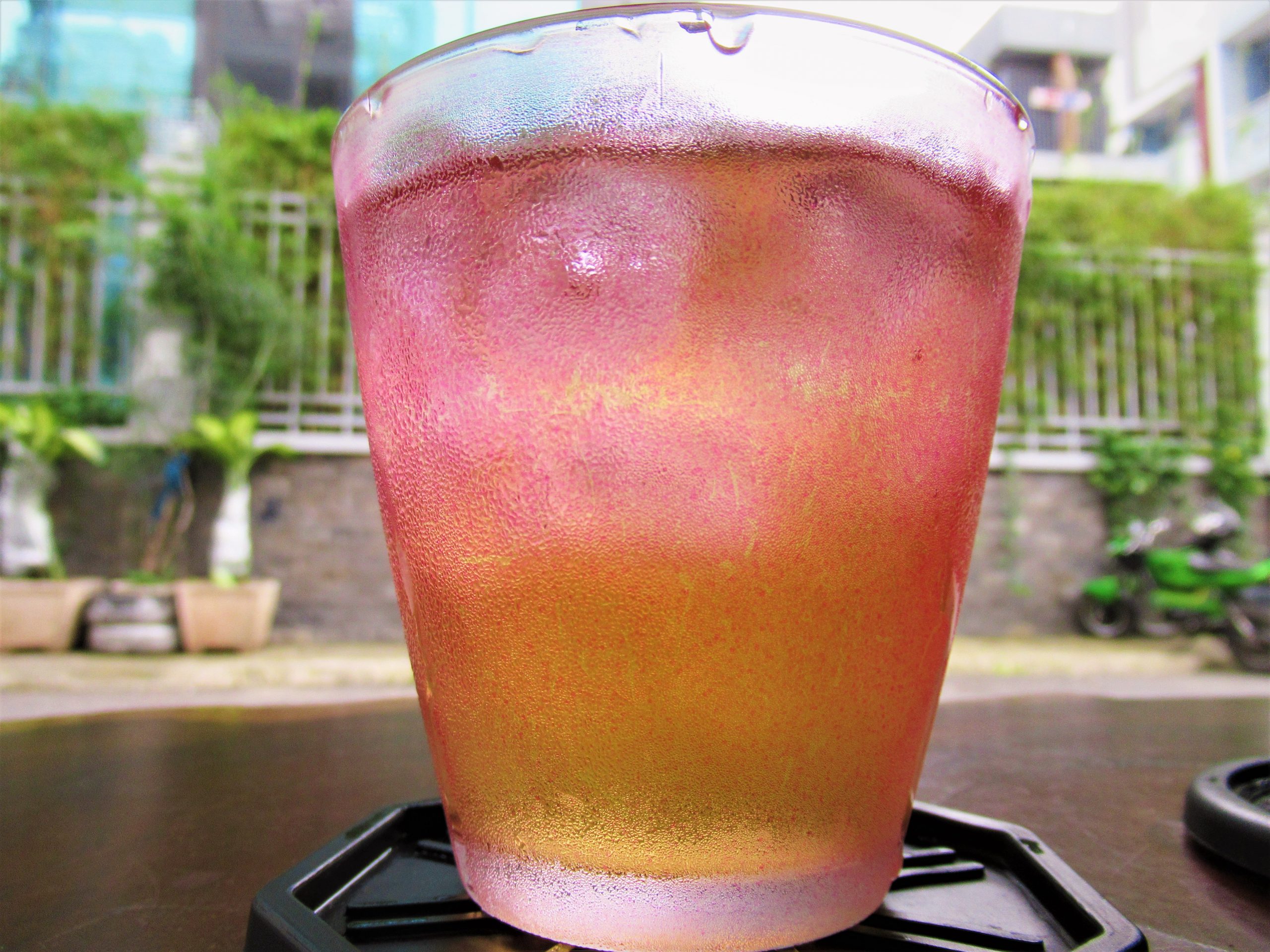
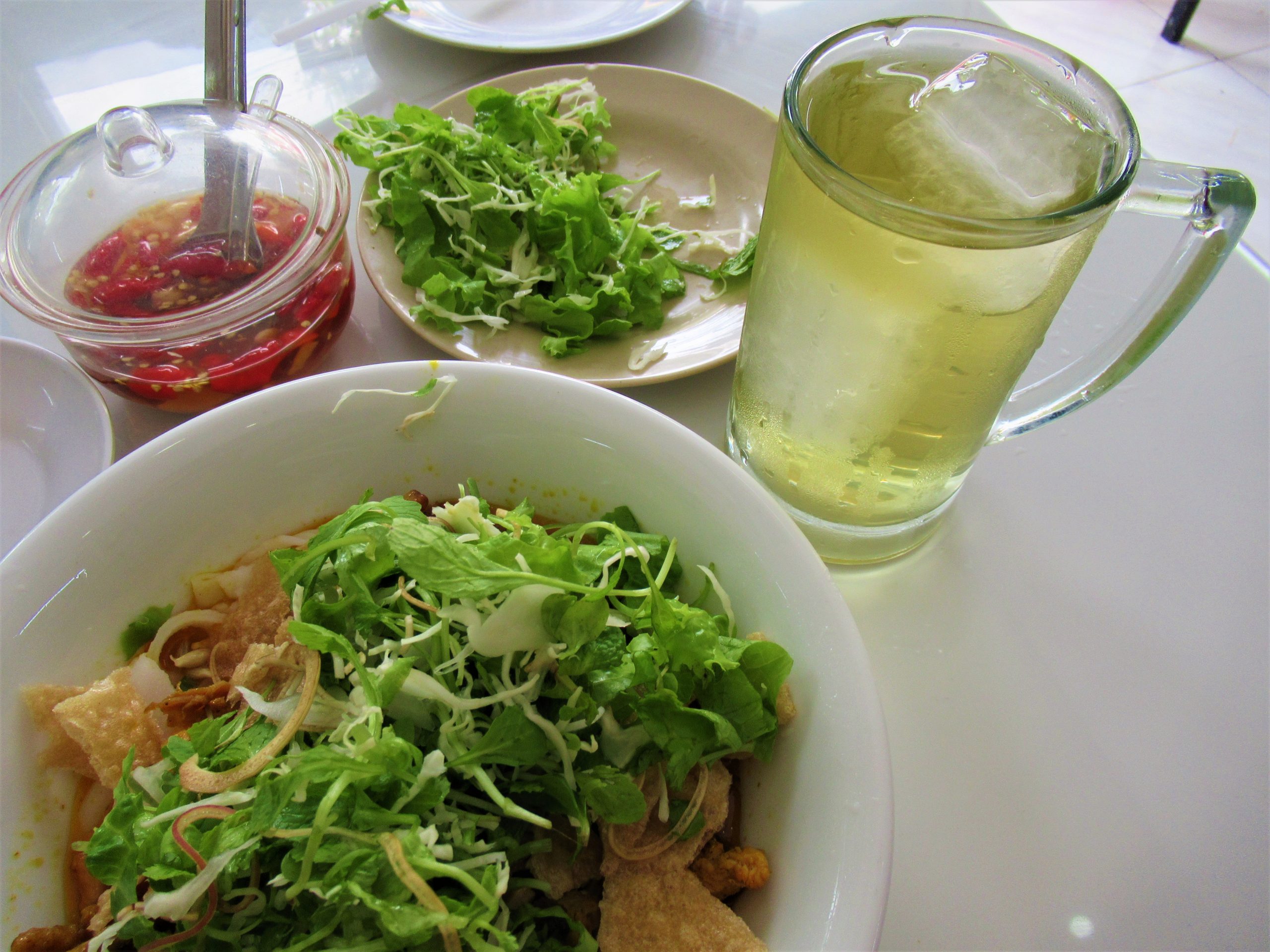
Of all these varieties (and I’m sure there are many more), my favourite has to be jasmine (trà lài – the go-to variety in most southern and south-central provinces), followed closely by fresh-leaf green tea (trà lá tươi – usually found at higher altitudes or in northern provinces), and lotus (trà sen – less common, with a very delicate flavour). I will always associate the aroma of jasmine tea with Vietnam. If, some day, I were to leave this country, I know that a time would come when the scent of jasmine would drift over from somewhere and take me right back to Vietnam. I’m yet to meet anyone who isn’t enchanted by the scent of jasmine. There’s a strange nostalgia to it: a longing, a fragility, and a delicacy.
Often when tea is flavoured with a strong-scented flower or fruit, the results pale in comparison to the real thing. But this is not the case with jasmine tea. Apparently, the flowers are picked at a particular time of night – when their scent is most powerful – and immediately dried so that the tea will hold maximum flavour. This would appear to work because, although there are many grades of quality for jasmine tea, even the cheapest, bog-standard glass of iced jasmine tea at a sidewalk stall will be beautifully scented.
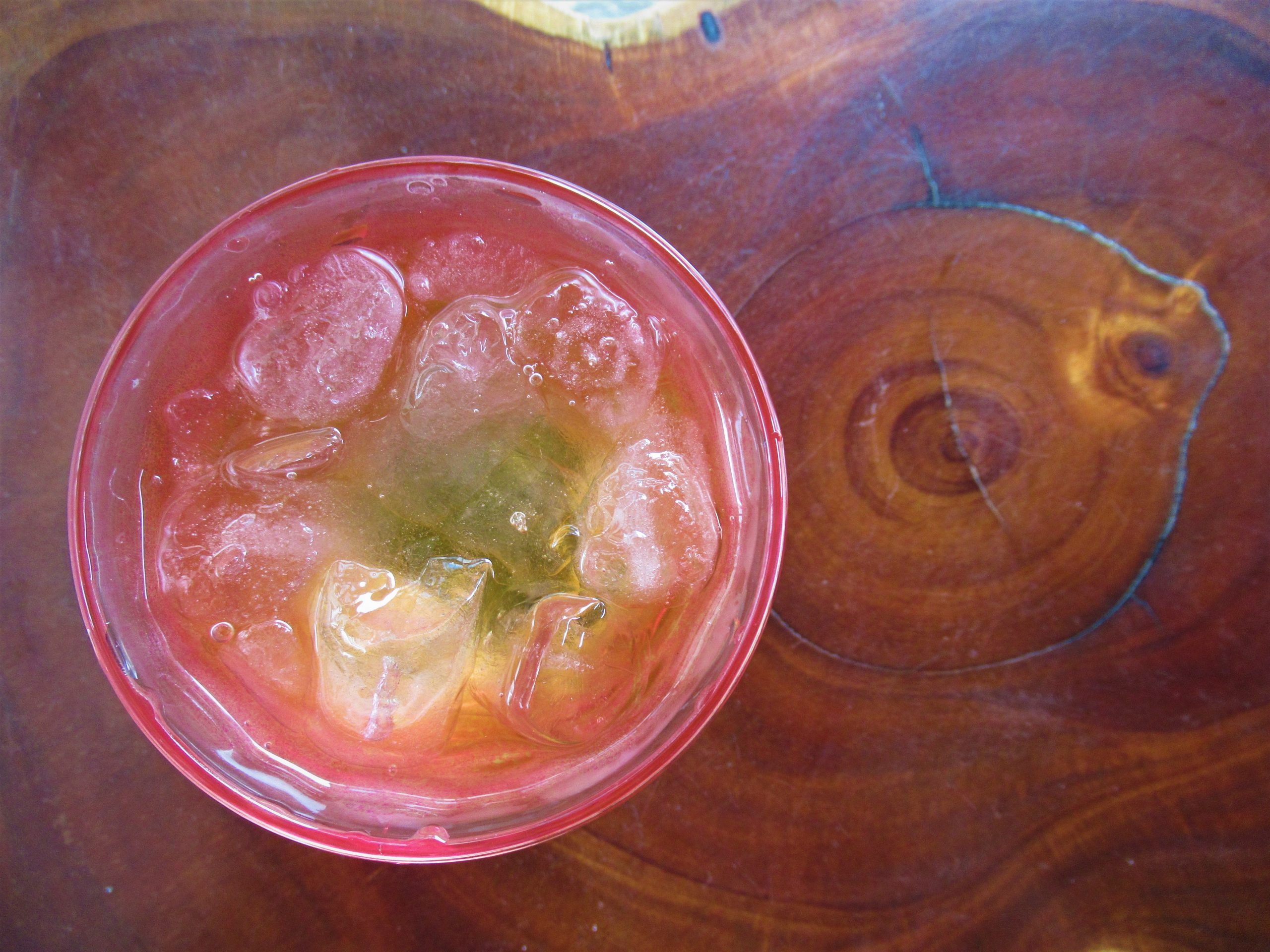
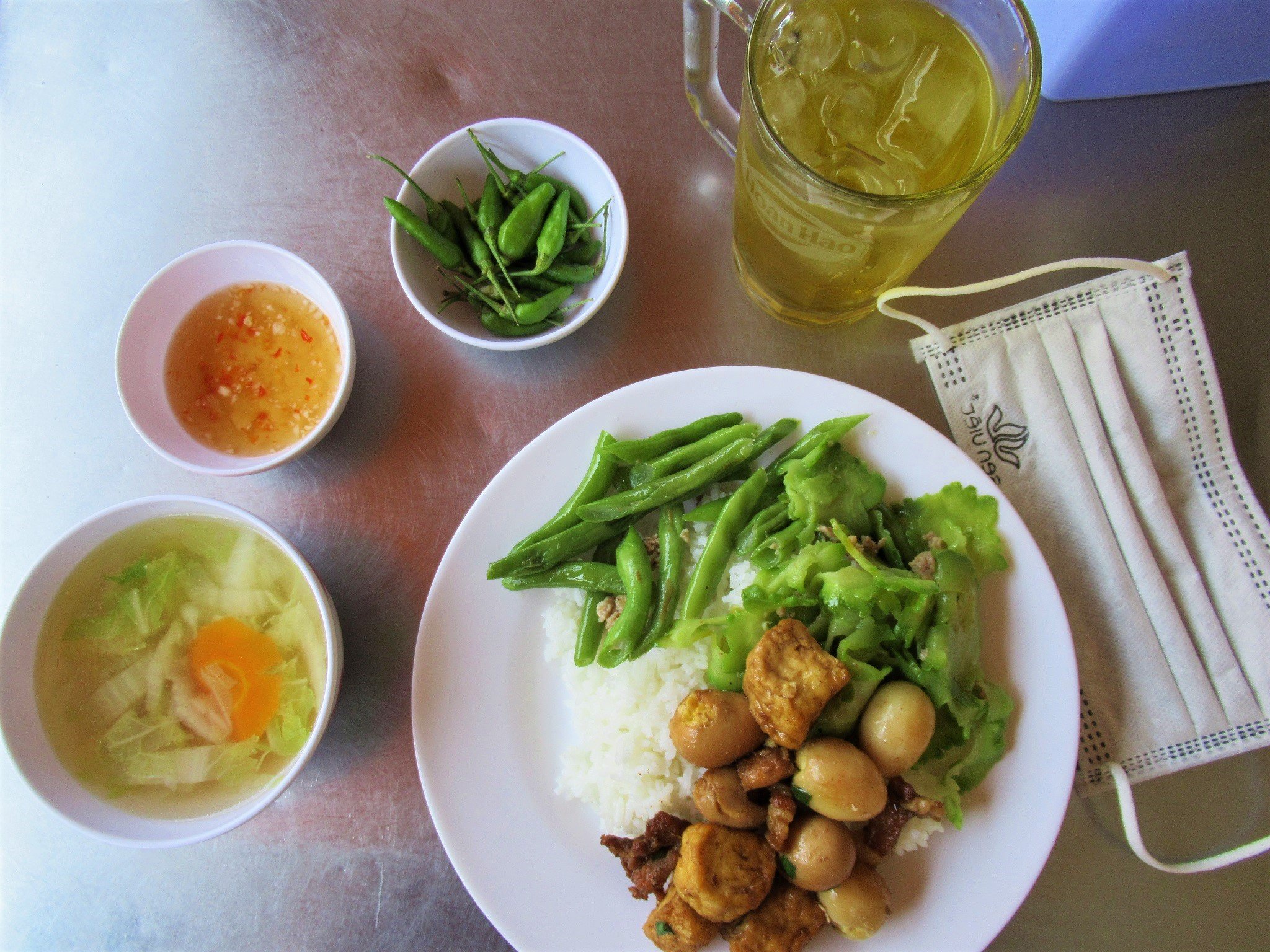
Iced tea is refreshing, soothing, and relaxing, but it’s also a pick-me-up with a surprisingly high caffeine content. Indeed, pound for pound, many tea varieties have a higher caffeine content than coffee. In most cases, trà đá is essentially green tea to which flavours – such as jasmine, lotus, and pandan – are added. When I first arrived in Vietnam to do a teacher training course, everyone from the group would gather for a rice lunch at the canteen of the Ho Chi Minh City Eye Hospital (which was cheap, informal and near to our teaching centre). None of us knew what trà đá was, but it was cold and refreshing and the weather was hot and humid, so we drank it like water, day after day with our lunch. We were already familiar with Vietnam’s reputation for extremely strong coffee, and it had helped us through many a late night of studying. But we’d heard nothing about the tea.
Each lunchtime, we’d get together – most of us newly acquainted – to eat at the eye hospital canteen, only to find ourselves falling into hysterics during our meal. It took us at least a week to realize that we were getting high on iced tea. The tea, which was poured from an enormous vat and had been brewing away for hours, was making our jokes seem funnier, causing us to become breathless with laughter, and easing the bonding process (in much the same way that other such substances for getting high do). From then on, we had our own name for trà đá: ‘happy tea’.

Getting high aside, iced tea is something of a tonic. Unlike Vietnamese coffee, trà đá is hardly ever mixed with sugar, milk or condensed milk. Many varieties of iced tea also contain antioxidants and boost metabolism. Tea has much stronger, longer, deeper roots in Vietnamese culture than coffee. Even today, while coffee shops far outnumber tea shops on the city streets, it is still tea that is far more likely to be served in people’s homes than coffee. One goes out for coffee, but one stays home for tea, and one serves tea – not coffee – to guests. Of course, there are exceptions, but it is tea, not coffee, that has thousands of years of history in Vietnam, and it is tea that is part of the long Vietnamese tradition of hospitality to strangers and friends alike.
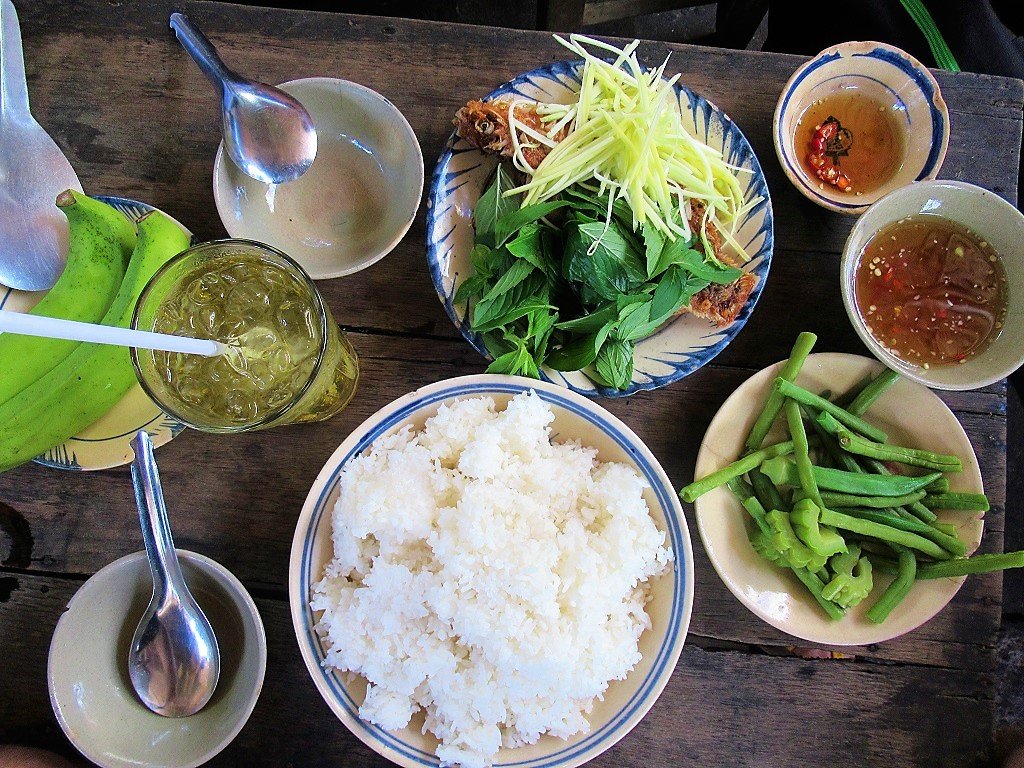
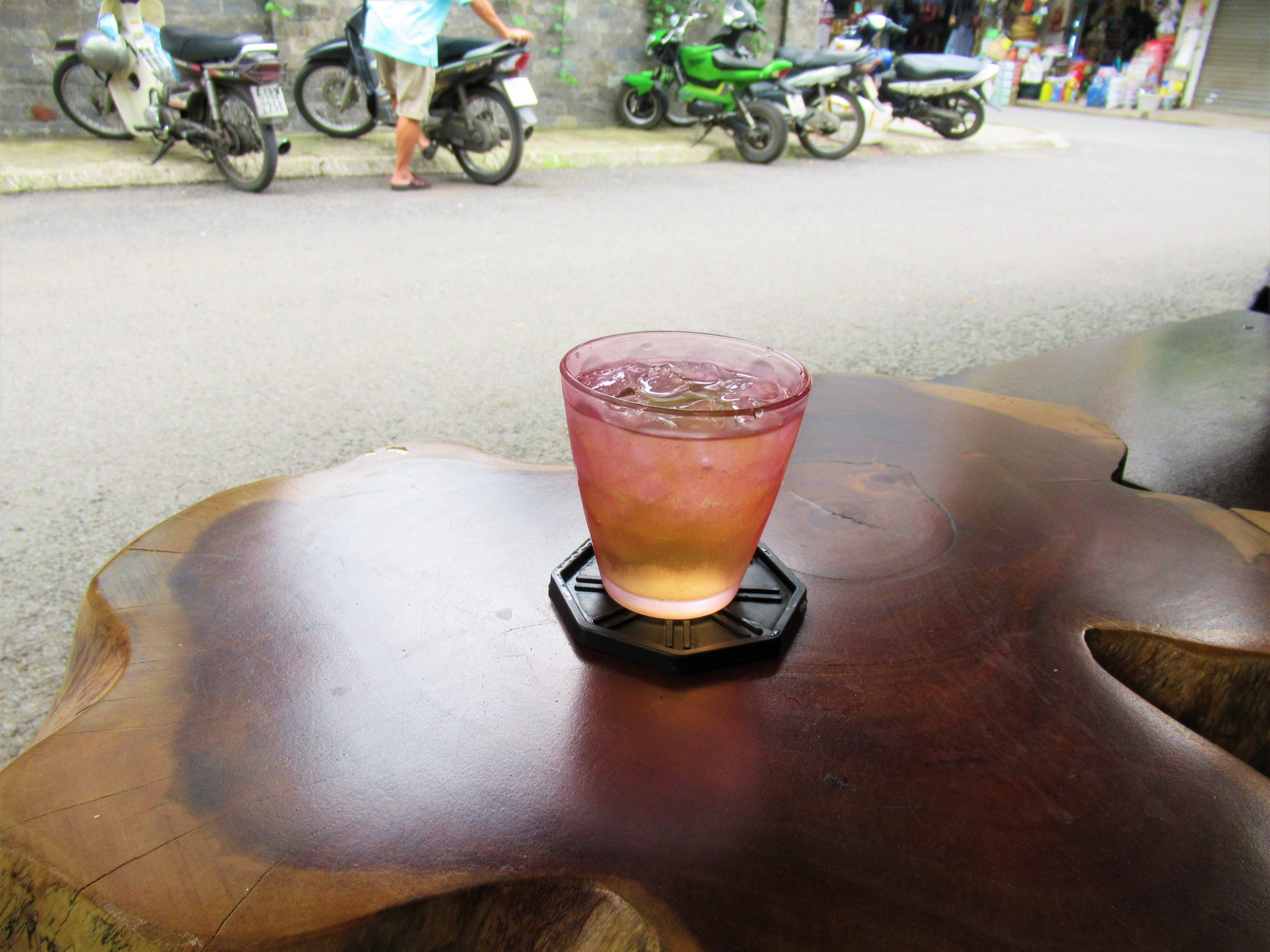
Although trà đá is ubiquitous and largely uncelebrated, to me it is a treat and a defining aspect of daily life in Vietnam. Its scent, its flavour, its presence on my table – whether in a cafe, at a street food stall, a rice eatery, or a friend’s home – has been a constant throughout my years in Vietnam. For me, trà đá is common yet exotic, humble yet rich, simple yet sophisticated, practical yet pleasurable. In all these ways, trà đá is a quintessential component of Vietnamese dining culture and social life.
What’s more, trà đá is often free. A glass of iced tea arrives on the table before you’ve even taken your seat, but you won’t see it on your bill. So essential is trà đá that it is both present and free at almost any dining or social occasion. Sadly, however, this noble tradition shows signs of dying out. It’s now common to be charged a nominal fee (1,000vnđ–5,000vnđ) for the pleasure of a glass of iced tea in many establishments. It’s also fair to say that, in recent years, trà đá is perhaps a little less ubiquitous than it once was, thanks partly to the burgeoning popularity of coffee and the proliferation of cafes (not to mention the trend in trà sữa – sweet milk tea). But, as always with fading traditions in Vietnam, this transformation is happening faster in the big cities than the countryside.

*Disclosure: I never receive payment for anything I write: my content is always free and independent. I’ve written this guide because I want to: I like Vietnamese iced tea and I want my readers to know about it. For more details, see my Disclosure & Disclaimer statements and my About Page
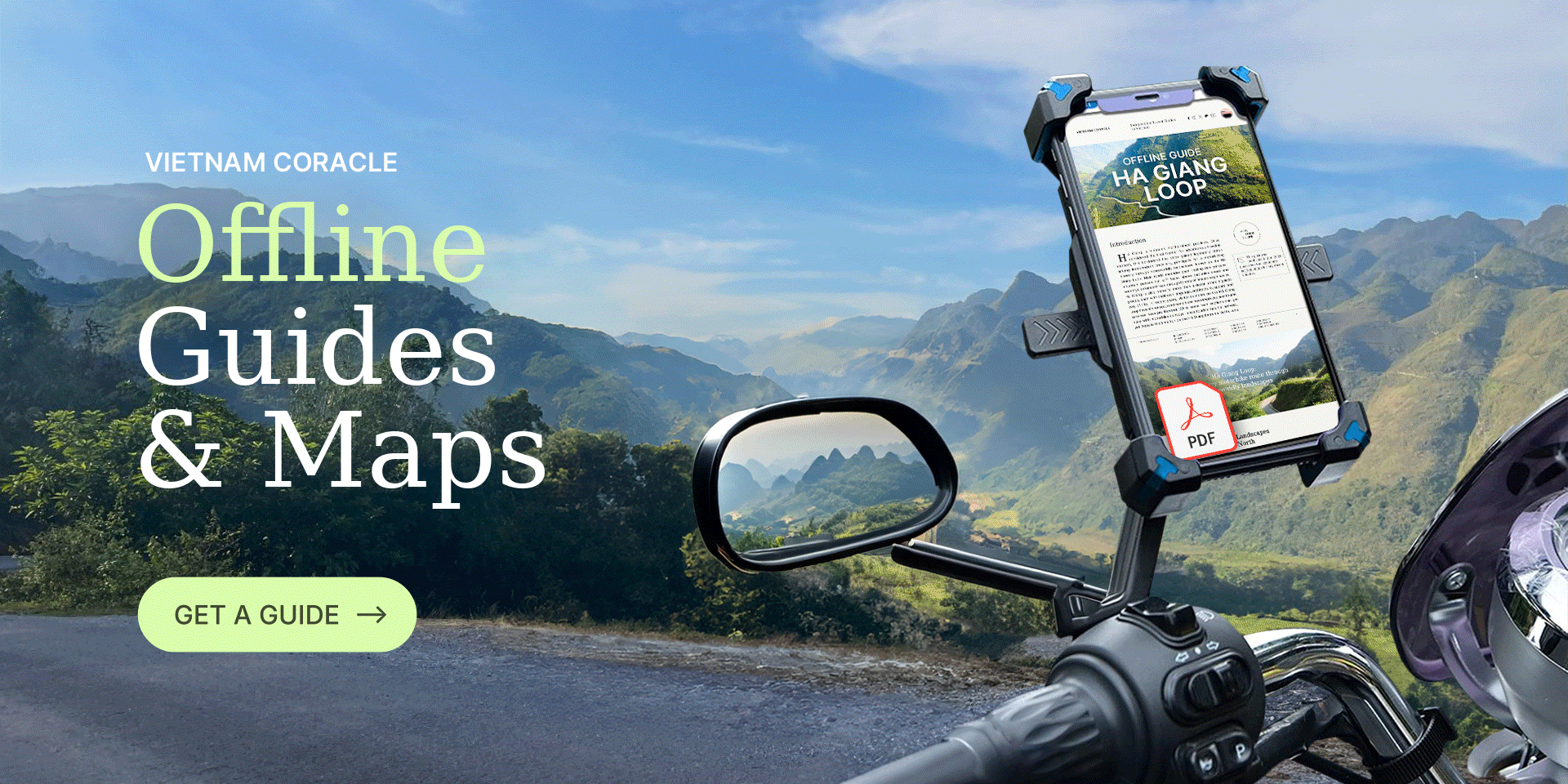
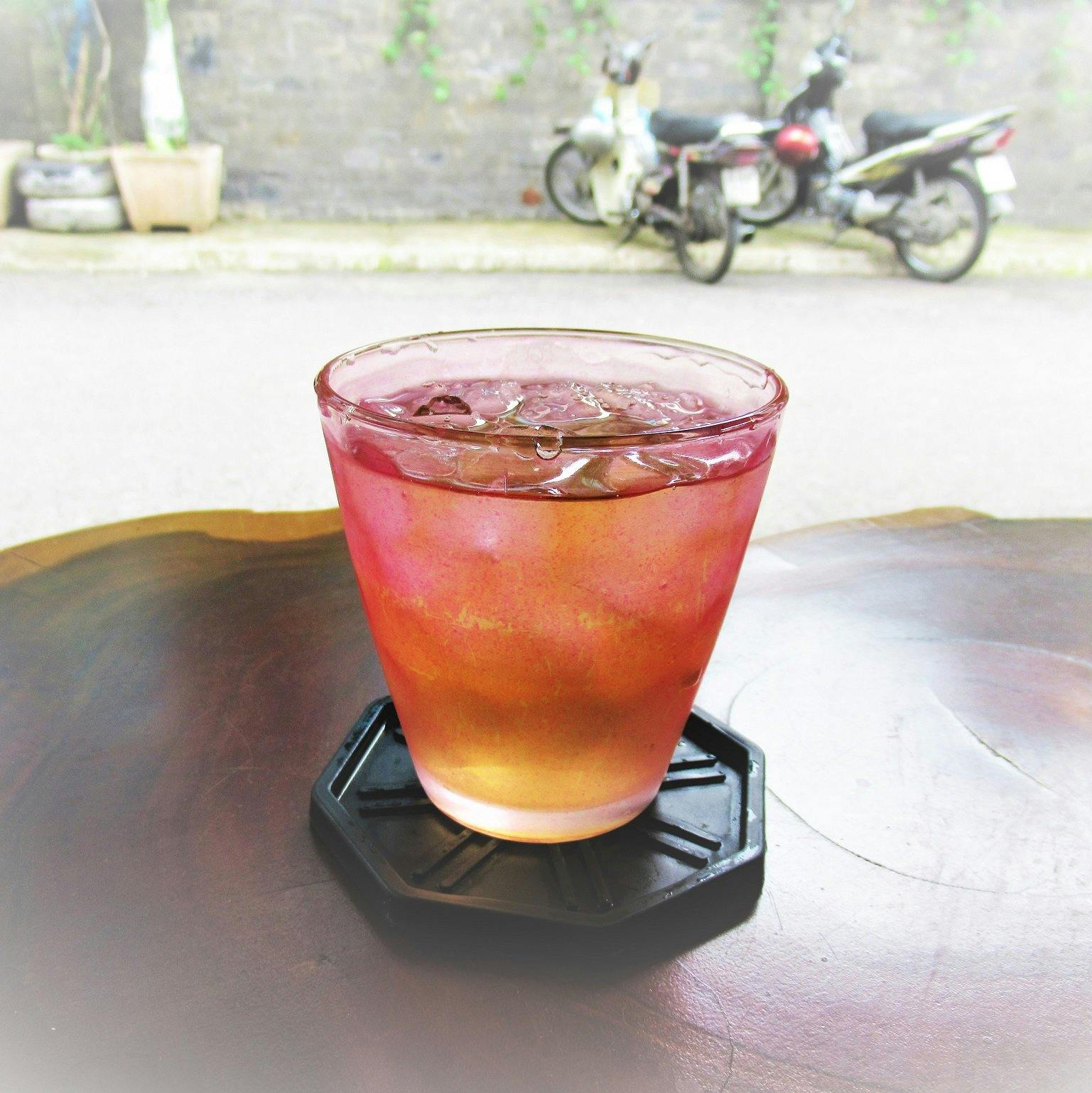
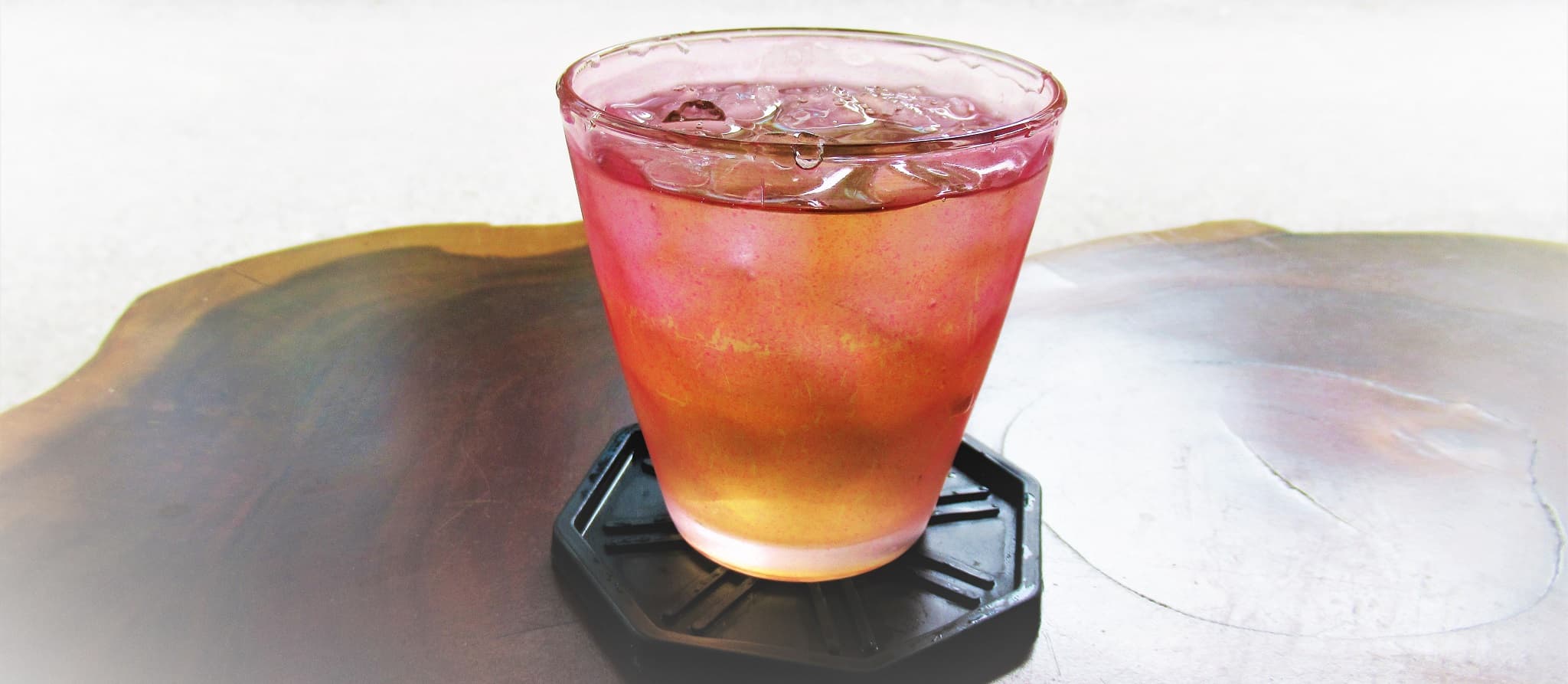
Hi Tom, Such a beautifully written piece! “Trà Đá” truly captures the heart and soul of everyday Vietnamese life — from street corners to family gatherings. It’s more than just a drink; it’s a cultural ritual, a symbol of community and simplicity.
Thanks, Hiếu.
Best,
Tom
Hi Tom,
I’m also a big fan of iced tea, especially jasmine, but often wonder what the iced tea, that has a distinct vanilla flavour, is called?
” It’s just tea”, is the same result I get, when asking. It sometimes even affects our decision to return to a particular establishment as I’m not a fan of vanilla but it’s one of those delightful rolls of the dice, when staying long term in vietnam.
I plan on advising my friends of the article as I’m often asked about day to day life in vietnam and this provides a great insight into something taken for granted so often.
Hi Jeff,
I think the vanilla flavoured tea you’re referring is probably pandan leaf (lá dứa). I’m actually not a big fan of pandan-flavoured tea either, although many of my friends love it.
Best,
Tom
Scrolling through the internet looking for directions for the chrysanthemum tea I just bought here in Thailand as I am missing my tra đã! Thank you for such a glorious reminder of such a humble drink.
Hi Susan,
Thank you, it’s lovely to hear that this piece brings back fond memories of Vietnam for you. I hope you’ll be back again soon.
Best,
Tom
We are in da lat , and the tea is full of ice , is it ok to drink of you are from the Netherlands?
Hi Arjan,
Yes, it’s fine to drink tea (or any other drink) with ice in Vietnam.
Best,
Tom
Thank you for capturing such an essential part of the every life. There are things that are often overlooked and this is an example of it.
When you get asked what to drink in restaurants (even fancy ones) but nothing can come up in your mind, trà đá is the go-to drink.
Now would you excuse me while I go grab a glass of iced tea, paired with a couple of lime, and enjoy the next articles in your wonderful blog.
Hi Lou,
Thank you. Glad to hear you enjoy the simple pleasure of a glass of iced, too. I had a good one today in fact 🙂
Best,
Tom
This is such an important part of my everyday life here and you have captured it wonderfully. Just the other day I was discussing with my friends how much we love tra da. It’s so Vietnamese and so perfect for a hot day. Thanks for articulating!
Hi Noah,
Thanks. Great to hear you enjoy this daily pleasure too.
Tom